
St. Andrew: The Heart of Guernsey's Charm
Discover the serene landscapes, historical landmarks, and local culinary delights of St. Andrew, the heart of Guernsey's charm.
St. Andrew in Guernsey is a serene parish that offers a blend of picturesque landscapes and historical landmarks. Nestled in the heart of the island, St. Andrew is known for its lush countryside, rolling hills, and tranquil environment. This destination is perfect for those looking to escape the hustle and bustle of city life and immerse themselves in nature. The parish is home to several notable attractions, including the German Military Underground Hospital, a relic from World War II that provides a haunting glimpse into the past. For nature enthusiasts, the Fauxquets Valley is a must-visit, offering scenic walks and the chance to explore the local flora and fauna. The Little Chapel, one of the smallest chapels in the world, is another highlight, adorned with intricate mosaics and shells. St. Andrew also boasts a variety of local eateries and markets where visitors can indulge in Guernsey's culinary delights. From fresh seafood to locally-produced dairy products, the parish offers a taste of the island's rich gastronomic heritage. Whether you're a history buff, a nature lover, or a foodie, St. Andrew has something to offer everyone.
Local tips in St. Andrew
- Visit the German Military Underground Hospital early in the day to avoid crowds and get a more personal experience.
- Wear comfortable walking shoes for exploring Fauxquets Valley and the surrounding countryside.
- Don't miss the Little Chapel; its intricate mosaics make for great photo opportunities.
- Try the local seafood at one of the parish's eateries for a true taste of Guernsey.
- Check local market days to buy fresh produce and unique local crafts.
St. Andrew: The Heart of Guernsey's Charm
St. Andrew in Guernsey is a serene parish that offers a blend of picturesque landscapes and historical landmarks. Nestled in the heart of the island, St. Andrew is known for its lush countryside, rolling hills, and tranquil environment. This destination is perfect for those looking to escape the hustle and bustle of city life and immerse themselves in nature. The parish is home to several notable attractions, including the German Military Underground Hospital, a relic from World War II that provides a haunting glimpse into the past. For nature enthusiasts, the Fauxquets Valley is a must-visit, offering scenic walks and the chance to explore the local flora and fauna. The Little Chapel, one of the smallest chapels in the world, is another highlight, adorned with intricate mosaics and shells. St. Andrew also boasts a variety of local eateries and markets where visitors can indulge in Guernsey's culinary delights. From fresh seafood to locally-produced dairy products, the parish offers a taste of the island's rich gastronomic heritage. Whether you're a history buff, a nature lover, or a foodie, St. Andrew has something to offer everyone.
When is the best time to go to St. Andrew?
Iconic landmarks you can’t miss
Castle Cornet
Explore the rich history and stunning views of Castle Cornet, Guernsey's majestic fortress overlooking the harbor.

The Little Chapel
Discover the enchanting Little Chapel in Guernsey, a unique blend of art and spirituality in the world's smallest chapel.
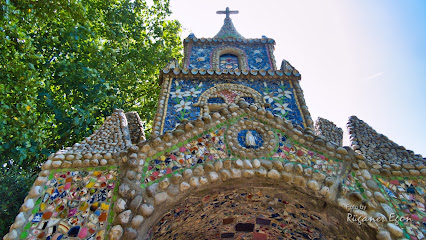
Hauteville - Victor Hugo House
Uncover the literary legacy of Victor Hugo at Hauteville House, a captivating museum in Guernsey filled with art, history, and inspiration.
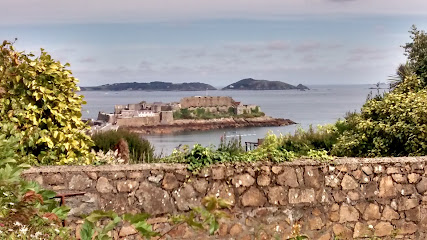
The Old Government House Hotel & Spa
Experience the elegance of The Old Government House Hotel & Spa in Guernsey, where luxury meets history in an unforgettable seaside retreat.
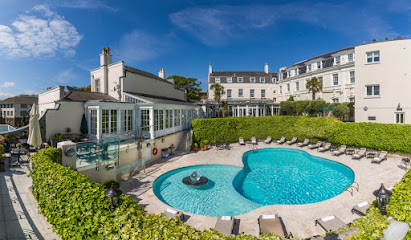
German Occupation Museum
Explore the German Occupation Museum in Guernsey for an immersive experience of WWII history, showcasing artifacts and personal stories of resilience.

Guernsey Museum & Art Gallery
Experience Guernsey's rich heritage and vibrant art scene at the iconic Guernsey Museum & Art Gallery, a cultural treasure for all visitors.

Sausmarez Manor
Explore the historic Sausmarez Manor in Guernsey, a captivating blend of art, culture, and stunning gardens waiting to be discovered.
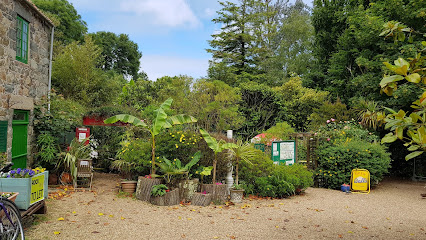
German Underground Hospital
Discover the haunting history of the German Underground Hospital, a WWII relic in Guernsey that unveils stories of courage and survival.

Fort Grey Shipwreck Museum
Explore the captivating maritime history of Guernsey at Fort Grey Shipwreck Museum, where stories of shipwrecks and the sea unfold.

Town Church of St. Peter Port
Discover the historical and architectural beauty of the Town Church of St. Peter Port, a must-see Protestant church and cultural landmark in Guernsey.

The Last Post - Mint Brasserie
Experience the best of Guernsey's culinary scene at The Last Post - Mint Brasserie, where delicious food meets a charming atmosphere.

Fort Hommet
Discover the historical charm and scenic beauty of Fort Hommet in Guernsey, a captivating fortress steeped in military history.

National Trust of Guernsey - Folk and Costume Museum
Discover the rich cultural heritage of Guernsey at the Folk and Costume Museum, where tradition and history come to life through captivating exhibits.
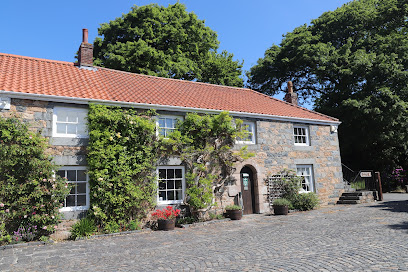
Vale Castle
Explore the enchanting Vale Castle in Guernsey – a historical landmark offering breathtaking views and rich heritage. A must-visit destination for all travelers.

Moulin Huet Bay
Experience the natural beauty and tranquility of Moulin Huet Bay, a stunning public beach in St. Peter Port, perfect for relaxation and outdoor adventures.

Unmissable attractions to see
Castle Cornet
Discover the historic charm of Castle Cornet, a 13th-century fortress offering stunning views and engaging exhibits on Guernsey's maritime history.

Hauteville House
Explore the historic Hauteville House in Guernsey, the former residence of Victor Hugo, where literature meets captivating history and stunning architecture.
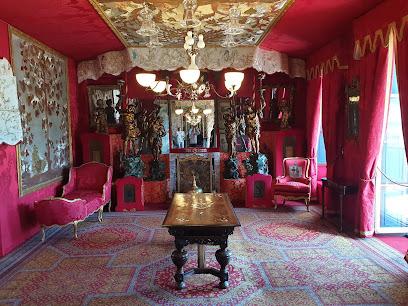
German Occupation Museum
Discover the riveting history of Guernsey during World War II at the German Occupation Museum, where stories of resilience come to life.

St Peter Port Harbour
Experience the enchanting beauty and vibrant culture of St Peter Port Harbour, Guernsey’s premier marina, perfect for leisurely walks and island explorations.

Town Church St. Peter Port
Discover the serene elegance and historical depth of the Town Church of St. Peter Port, a must-visit hotspot in beautiful Guernsey.

Le Creux es Faies
Explore the ancient wonders of Le Creux es Faies in Guernsey, a captivating passage tomb rich in history and natural beauty.

La Societe Guernesiaise
Explore La Societe Guernesiaise in Guernsey for a unique insight into the island's biodiversity and conservation efforts.

Fairfield
Discover the tranquility of Fairfield, a serene memorial park in Guernsey, perfect for reflection, relaxation, and appreciating nature's beauty.

Saints Bay Harbour Wall
Experience the serene beauty and rich maritime heritage of Saints Bay Harbour Wall, a perfect escape in Guernsey's stunning coastal landscape.

Essential places to dine
Dix Neuf
Discover Dix Neuf in Guernsey: A charming brasserie offering delicious cuisine from breakfast to dinner in an inviting atmosphere.
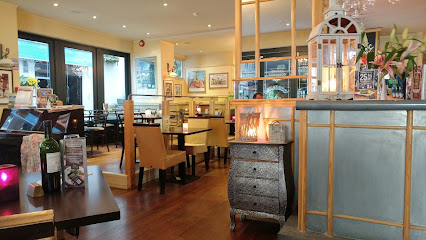
Crabby Jack's
Experience delightful seafood and stunning coastal views at Crabby Jack's in Guernsey – where every meal is a celebration of local flavors.

Slaughterhouse - Randalls
Experience exquisite local cuisine at Slaughterhouse - Randalls in Guernsey, where fresh ingredients meet breathtaking views.

Christies Brasserie
Experience exquisite local cuisine with breathtaking views at Christies Brasserie in Guernsey.

The Terrace Garden Cafe
Experience authentic Thai cuisine in a cozy café setting at The Terrace Garden Cafe in Guernsey – where flavor meets hospitality.

The Deerhound
Experience the best of Guernsey at The Deerhound Gastropub & Inn – where delicious food meets warm hospitality.

The Boathouse
Discover fresh seafood and local delicacies at The Boathouse on Victoria Pier - where stunning views meet culinary excellence.

Nineteen Bar & Grill
Experience culinary excellence at Nineteen Bar & Grill in Guernsey—where delectable steaks meet vibrant social ambiance.

La Perla Restaurant
Experience the flavors of Guernsey at La Perla Restaurant - where fresh ingredients meet exceptional service in a cozy setting.

Le Nautique Restaurant
Discover exquisite seafood at Le Nautique Restaurant in St Peter Port, where fresh flavors meet stunning harbor views.

The Farmhouse
Experience the charm of Guernsey at The Farmhouse - where delightful cuisine meets stunning surroundings.

The Hook
Experience culinary excellence at The Hook in Guernsey - where fresh seafood meets succulent steaks and innovative sushi.
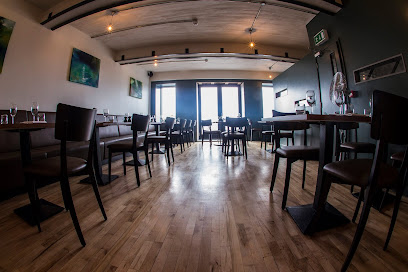
The Doghouse
Experience delicious grilled cuisine and vibrant entertainment at The Doghouse, Guernsey's favorite gastropub and live music venue.

Pier 17 Restaurant
Dine at Pier 17 Restaurant in Guernsey for exquisite seafood and stunning harbor views—an unforgettable culinary experience awaits.

Le Gouffre Café
Discover local flavors at Le Gouffre Café - your cozy retreat in Guernsey with delicious meals and stunning views.

Markets, malls and hidden boutiques
Coop En route St. Andrew
Discover the charm of Coop En route St. Andrew in Guernsey – your go-to supermarket for local flavors and essentials during your island adventure.

Candie Cache
Candie Cache: Your one-stop convenience store in Guernsey, offering local goods and essentials for all your travel needs.

Forest Stores
Explore the delightful Forest Stores in Guernsey for a unique grocery shopping experience filled with local produce and specialty items.

Matalan
Explore Matalan in Guernsey for a stylish shopping experience with a diverse range of affordable fashion and homeware options for every traveler.

Ogiers
Explore Ogiers in Guernsey for a curated selection of summer fashion and exceptional customer service in a quaint shopping atmosphere.

Becky Rowe
Discover unique, handcrafted jewelry at Becky Rowe, Guernsey’s bespoke jewelry store, where artistry meets local charm.

Model Shop
Explore creativity at the Model Shop in St. Peter Port, Guernsey, where enchanting models and toys await every visitor.

British Red Cross shop, Guernsey
Explore the British Red Cross shop in Guernsey for unique thrift finds while supporting humanitarian efforts.

Soava Boutique
Explore Soava Boutique in Guernsey for unique gifts, local crafts, and exquisite artistry that captures the island's charm.

Cadeaux Guernsey Gift Shop
Discover unique, locally crafted gifts at Cadeaux Guernsey Gift Shop, a must-visit destination for tourists seeking a piece of island charm.

M&S Kids
Discover trendy and comfortable children's clothing at M&S Kids in Guernsey, where fashion meets quality for your little ones.

Les Bourgs Hospice Charity Shop
Explore the charm of Guernsey while supporting a worthy cause at Les Bourgs Hospice Charity Shop, where unique treasures await every visitor.

SEPHORA
Discover the ultimate destination for beauty lovers in Guernsey at SEPHORA, featuring a vast selection of cosmetics, skincare, and fragrance.

Penelope Hope
Explore the enchanting Penelope Hope, a home goods store in Guernsey, perfect for unique gifts and decor reflecting the island's charm.

Hansa
Discover a world of organic delights and wellness at Hansa, Guernsey's premier health food store, perfect for any health enthusiast.

Essential bars & hidden hideouts
Thomas De La Rue
Experience the lively atmosphere of Thomas De La Rue, Guernsey's premier gastropub offering delicious food, drinks, and vibrant local events.

Ship & Crown
Discover Ship & Crown, a charming bar and restaurant in Guernsey offering fresh seafood, local dishes, and stunning coastal views.

Nineteen Bar & Grill
Experience the vibrant culinary scene at Nineteen Bar & Grill in Guernsey, where delicious food and great company await.

The Cock and Bull
Experience the lively atmosphere of The Cock and Bull in St. Peter Port, where delicious food, a wide array of beers, and live music await.

The Doghouse
Experience the vibrant atmosphere and delicious grill cuisine at The Doghouse, a premier gastropub and live music venue in Guernsey.

CORNERSTONE Social House
Discover the delightful CORNERSTONE Social House, a perfect gastropub in St Peter Port offering locally sourced dishes and a welcoming atmosphere.
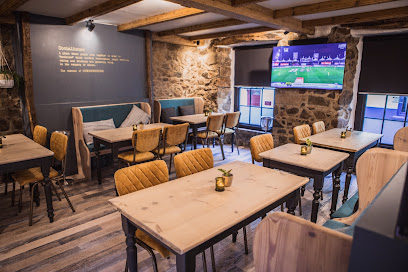
The Last Post - Mint Brasserie
Experience the charm of Guernsey at The Last Post - Mint Brasserie, a cozy bar and restaurant offering a delightful menu and warm hospitality.

Albion House Tavern
Discover the heart of Guernsey's social scene at Albion House Tavern, where great drinks and vibrant atmosphere await every visitor.

The Swan Inn
Discover The Swan Inn in Guernsey - your perfect bar getaway with a cozy atmosphere, great drinks, and local charm.

Dorset Arms
Discover Dorset Arms, a cozy pub in Guernsey offering local brews, delicious pub fare, and a vibrant atmosphere perfect for tourists.

The Red Lion - Randalls
Experience the charm of Guernsey at The Red Lion, a delightful pub offering classic dishes and a welcoming atmosphere for every visitor.

Harbour Lights
Experience the charm of Harbour Lights, a vibrant pub in St. Peter Port, offering local cuisine and stunning views of the beautiful Guernsey coastline.

JB Parkers' Bar & Cellar
Experience exquisite dining and an exceptional wine selection at JB Parkers' Bar & Cellar in Guernsey, where culinary delights meet a vibrant atmosphere.

The Jamaica Inn - Randalls
Discover The Jamaica Inn - Randalls, a cozy pub in Guernsey offering a vibrant atmosphere and delicious local fare perfect for tourists.
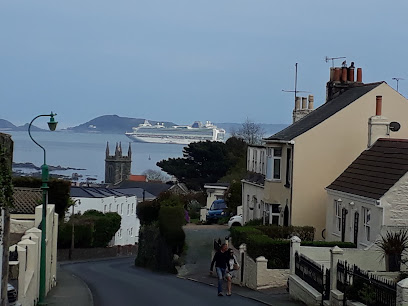
The Oak Bar
Experience the charm of Guernsey at The Oak Bar, a local pub serving delicious food and drinks in a cozy atmosphere.

Local Phrases
-
- HelloBonjour
[bon-zhoor] - GoodbyeAu revoir
[oh reh-vwahr] - YesOui
[wee] - NoNon
[nohn] - Please/You're welcomeS'il vous plaît / De rien
[see voo pleh / duh ryehn] - Thank youMerci
[mehr-see] - Excuse me/SorryExcusez-moi / Désolé
[ex-kew-zay mwah / day-zoh-lay] - How are you?Comment ça va?
[koh-mohn sah vah?] - Fine. And you?Bien. Et toi?
[byen. ay twah?] - Do you speak English?Parlez-vous anglais?
[par-lay voo ahn-glay?] - I don't understandJe ne comprends pas
[zhuh nuh kohm-prahnd pah]
- HelloBonjour
-
- I'd like to see the menu, pleaseJe voudrais voir le menu, s'il vous plaît
[zhuh voo-dray vwahr luh muh-new, see voo pleh] - I don't eat meatJe ne mange pas de viande
[zhuh nuh mahnj pah duh vyand] - Cheers!Santé!
[sahn-tay] - I would like to pay, pleaseJe voudrais payer, s'il vous plaît
[zhuh voo-dray pay-yay, see voo pleh]
- I'd like to see the menu, pleaseJe voudrais voir le menu, s'il vous plaît
-
- Help!Au secours!
[oh suh-koor] - Go away!Allez-vous en!
[ah-lay voo zahn] - Call the Police!Appelez la police!
[ah-peh-lay lah poh-lees] - Call a doctor!Appelez un médecin!
[ah-peh-lay uh mayd-sahn] - I'm lostJe suis perdu
[zhuh swee pair-doo] - I'm illJe suis malade
[zhuh swee mah-lahd]
- Help!Au secours!
-
- I'd like to buy...Je voudrais acheter...
[zhuh voo-dray za-shtay...] - I'm just lookingJe regarde juste
[zhuh ruh-gard juhst] - How much is it?Combien ça coûte?
[kohm-byen sah koot?] - That's too expensiveC'est trop cher
[say troh shair] - Can you lower the price?Pouvez-vous baisser le prix?
[poo-veh voo bay-say luh pree?]
- I'd like to buy...Je voudrais acheter...
-
- What time is it?Quelle heure est-il?
[kell uhr ay-teel?] - It's one o'clockIl est une heure
[eel ay ewn uhr] - Half past (10)Dix heures et demie
[dees uhr ay duh-mee] - MorningMatin
[mah-tahn] - AfternoonAprès-midi
[ah-pray mee-dee] - EveningSoir
[swahr] - YesterdayHier
[yehr] - TodayAujourd'hui
[oh-zhoor dwee] - TomorrowDemain
[duh-mehn] - 1Un
[uhn] - 2Deux
[duh] - 3Trois
[twah] - 4Quatre
[kat-ruh] - 5Cinq
[sank] - 6Six
[sees] - 7Sept
[set] - 8Huit
[wheat] - 9Neuf
[nurf] - 10Dix
[dees]
- What time is it?Quelle heure est-il?
-
- Where's a/the...?Où est...?
[oo ay...?] - What's the address?Quelle est l'adresse?
[kell ay lah-dress?] - Can you show me (on the map)?Pouvez-vous me montrer (sur la carte)?
[poo-veh voo muh mohn-tray (soor lah kart)?] - When's the next (bus)?Quand est le prochain (bus)?
[kahn ay luh proh-shahn (bus)?] - A ticket (to ....)Un billet (pour ...)
[uhn bee-yay (poor ...)]
- Where's a/the...?Où est...?
History of St. Andrew
-
St. Andrew, located in the heart of Guernsey, has a rich history that dates back to the Neolithic period. Archaeological evidence suggests that early settlers inhabited the area over 5,000 years ago. The discovery of ancient burial sites and dolmens, such as the Les Fouaillages, showcases the long-standing human presence in the region.
-
The medieval era saw the establishment of St. Andrew's Parish Church, a focal point for the community. Built in the 12th century, the church is a remarkable example of Norman architecture. It has withstood the test of time, bearing witness to centuries of religious and social changes. The church's intricate stonework and stained glass windows are a testament to the craftsmanship of the era.
-
During the Hundred Years' War (1337-1453), Guernsey, including St. Andrew, experienced turmoil and conflict. The strategic location of the island made it a target for both French and English forces. St. Andrew's Parish Church served as a refuge for locals during invasions, and remnants of fortifications from this period can still be found in the area.
-
The Reformation in the 16th century brought significant religious changes to St. Andrew. The shift from Catholicism to Protestantism led to the transformation of local religious practices and institutions. The Parish Church, like many others in Guernsey, underwent modifications to align with Protestant doctrines. This period also saw the rise of local figures who played pivotal roles in the religious landscape of the island.
-
The Napoleonic Wars (1803-1815) prompted the construction of military fortifications across Guernsey, including St. Andrew. Fort Hommet, although primarily in the nearby Castel parish, had strategic importance for the defense of the island. The fortifications built during this time highlight the military significance of the region and its role in broader European conflicts.
-
St. Andrew, like the rest of Guernsey, was occupied by German forces during World War II from 1940 to 1945. The occupation left a profound impact on the area, with the construction of bunkers and fortifications still visible today. The local community endured significant hardships, but their resilience is commemorated in various historical sites and memorials throughout the parish.
-
Following the liberation of Guernsey in 1945, St. Andrew underwent significant development and modernization. The post-war era brought improvements in infrastructure, education, and healthcare. Today, St. Andrew is a vibrant community that balances its rich historical heritage with modern amenities. The preservation of historical sites alongside contemporary developments makes St. Andrew a unique destination for visitors.
-
St. Andrew is known for its vibrant cultural heritage and festivals. Events such as the annual St. Andrew's Day celebrations and local fairs showcase the community's traditions and customs. The parish is also home to various cultural institutions and museums that preserve and promote the history and culture of the area. These cultural activities offer a glimpse into the local way of life and the enduring spirit of the community.
St. Andrew Essentials
-
St. Andrew is located in the heart of Guernsey, one of the Channel Islands. The nearest airport is Guernsey Airport (GCI), which has regular flights from major UK cities such as London, Manchester, and Birmingham. From the airport, St. Andrew is a short taxi ride away. Alternatively, you can take a ferry from the UK or France to St. Peter Port, the main port in Guernsey, and then a bus or taxi to St. Andrew.
-
St. Andrew is well-connected by public transport. Buses operated by the Guernsey Bus service run frequently and can take you to various parts of the island. Taxis are also readily available and can be hailed from the street or booked in advance. For those who prefer more flexibility, car rentals are available, but keep in mind that driving is on the left side of the road. Biking is another popular way to explore the area, as there are many scenic routes.
-
The official currency is the British Pound (GBP). Credit and debit cards are widely accepted in hotels, restaurants, and shops. However, it is advisable to carry some cash for smaller establishments or in case of technical issues with card machines. ATMs are available throughout Guernsey, including in St. Andrew.
-
St. Andrew is generally a safe area for tourists. Crime rates are low, but it is always wise to take standard precautions. Avoid leaving valuables unattended and be cautious when walking alone at night. There are no specific high-crime areas targeting tourists, but staying vigilant and aware of your surroundings is always a good practice.
-
In case of emergency, dial 999 for immediate assistance. The emergency services in Guernsey are reliable and efficient. There are local medical facilities available for health emergencies. It is recommended to have travel insurance that covers medical emergencies. Pharmacies are available where you can purchase over-the-counter medications for minor health issues.
-
Fashion: Do dress in layers, as weather can be unpredictable. Smart-casual attire is generally acceptable. Religion: Do respect local customs and traditions. When visiting churches, dress modestly and behave respectfully. Public Transport: Do have exact change or a contactless card for bus fares. Don't play loud music or talk loudly on public transport. Greetings: Do greet people with a friendly 'hello' or a handshake. Eating & Drinking: Do try local delicacies like Guernsey Gâche and Bean Jar. Don't refuse food or drink offerings as it can be considered impolite.
-
To experience St. Andrew like a local, visit the local markets and farm shops for fresh produce and traditional Guernsey goods. Engage with locals who are often friendly and willing to share stories about the area’s history and culture. Take a leisurely walk through the picturesque lanes and enjoy the serene landscape. Don't miss visiting the Little Chapel, a unique and beautifully decorated miniature church.
Trending Landmark in St. Andrew
-
Castle Cornet
-
The Little Chapel
-
Hauteville - Victor Hugo House
-
The Old Government House Hotel & Spa
-
German Occupation Museum
-
Guernsey Museum & Art Gallery
-
Sausmarez Manor
-
German Underground Hospital
-
Fort Grey Shipwreck Museum
-
Town Church of St. Peter Port
-
The Last Post - Mint Brasserie
-
Fort Hommet
-
National Trust of Guernsey - Folk and Costume Museum
-
Vale Castle
-
Moulin Huet Bay
Nearby Cities to St. Andrew
-
Things To Do in St. Martin
-
Things To Do in Castel
-
Things To Do in Forest
-
Things To Do in St. Saviour
-
Things To Do in St. Peter Port
-
Things To Do in Vale
-
Things To Do in St. Sampson
-
Things To Do in St. Anne
-
Things To Do in St. Ouen
-
Things To Do in St. Peter
-
Things To Do in St. Brelade
-
Things To Do in St. Lawrence
-
Things To Do in St. Aubin
-
Things To Do in Trinity
-
Things To Do in St. Helier








